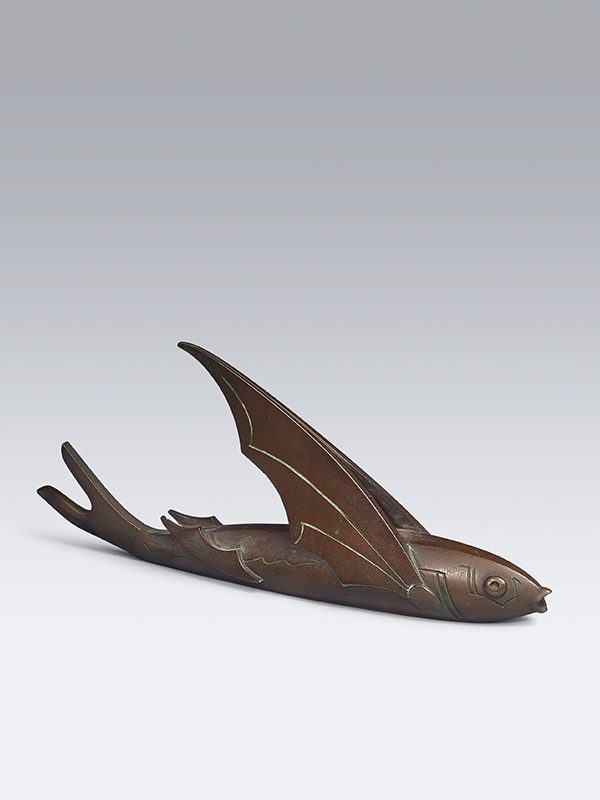Bronze paperweight of flying fish
by Neya Churoku
Japan, Showa period, 1930s
A bronze model of a “flying” fish. The large main fins extend at a diagonal angle from the body and the fish has secondary fins at the back. The bronze is signed on the base: Churoku and retains its fitted wood box (tomobako), which is inscribed on the lid: ‘flying fish, cast bronze, paper weight, made by Churoku’ with the seal ‘Churoku’.
Exocoetidae are a family of marine fish known colloquially as “flying fish”. While they cannot actually fly in the same way as a bird does, flying fish can make powerful, self-propelled leaps out of water with their long wing-like fins and can glide for considerable distances above the water’s surface. The main reason for this behaviour is thought to be to escape from predators. Flying fish are commercially fished in Japan. The artist Neya Churoku (1897 – 1987) was born in Osaka and was a graduate of the Tokyo School of Fine Arts, where he was taught by a well-known artist, the bronze caster Tsuda Shinobu (1875 – 1946), see page no. 174. In 1928 Churoku participated for the first time in the national art exhibitions with the 9th Teiten, continuing with the Teiten exhibitions until 1934, winning the tokusen or grand prize at the last one. Churoku was invited to participate in the 1933 World Exposition in Chicago, and from 1936 onwards he participated in the Bunten exhibitions. 1 Works by Churoku are in the Philadelphia Museum of Art 2, the Imperial Household Agency Collection in Tokyo and in the Museum of the Tokyo University of Fine Arts.
- Fischer, F. The Art of Japanese Craft: 1875 to the Present, Philadelphia Museum of Art in Association with Yale University Press, New Haven & London, 2008, p. 55
- Fischer, F. op. cit. no. 39, p. 46, and p. 6 (detail)

